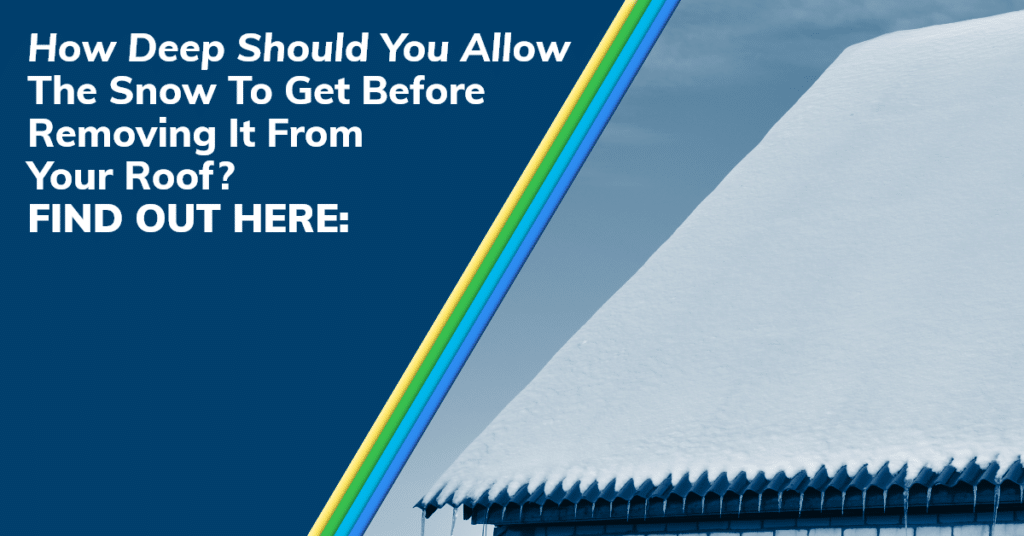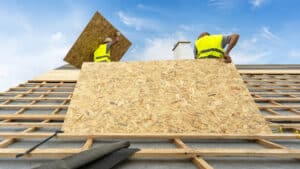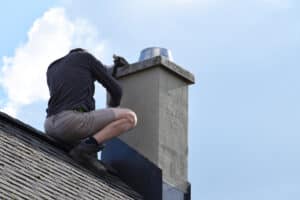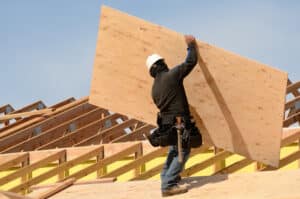Snow removal is essential for the safety and proper functioning of your roof. Until now, you’ve probably removed snow from your roof when it seemed about right. Still, you might have wondered how deep you should allow the snow to get before taking it off your rooftop.
Here’s what you need to know about the weight of snow and how often you need to have snow removed to better protect your home from damage.
What is Snow Load?
Snow load is the downward force exerted on a roof by the weight of accumulated ice and snow. While many houses are built to be durable and last many years, the weight of heavy snow and ice can impact the structural integrity of the roof and the house itself.
The average residential roof can support 20 to 25 pounds of snow per square roof. In snowy climates, however, roofs are designed to support a heavier snow load.
If the weight of snow and ice exceeds what the roof was designed to shoulder, the roof or entire structure can collapse under pressure.
Non-compliance with building code requirements, poor construction, weak roofing materials, inadequate roof drainage, and uneven snow load distribution can further lead to an overstressed roof. Also, snow can accumulate in one area of the roof, creating an increased snow load on some parts of the roof.
Different Types of Roofs Can Handle Different Amounts of Snow
The slope and type of roof surface play a vital role in determining the amount of snow retained on the roof. Low-pitch and flat roofs are prone to snow overload because they tend to hold onto snow more easily than steep-pitched ones. As a result, melting snow takes time to drain off the roof. It can re-freeze and add more stress to the roof.
A roof with a slope steeper than 7:12 or 5:12, for instance, will allow snow to slide off more readily. Roofs in snowy climates should have at least a 10-degree pitch.
While the angle and pitch of a roof help shed snow, having too many angles for aesthetic purposes could cause problems with snow shedding. Complex designs with many slopes, corners, hips, and valleys disrupt the ability of a roof to shed snow.
Similarly, the addition of raised elements, such as dormers and skylights, changes the dynamics of snow behavior on a roof. And when additional materials are installed over an old roof, the roof’s tolerance to snow weight reduces because of the weight of the roofing cover.
Stepped roofs and saw-toothed provide room for deep snow drifts to build under windy conditions. Unlike short-span roofs, long-span roofs are susceptible to collapse readily.
Tactile roofing materials such as aggregate finishes and asphalt shingles are less likely to shed snow compared to more slippery roofing materials. On the other hand, metal roofing panels and single-ply membranes tend to shed accumulated snow with ease.
The Weight of Different Types of Snow or Ice
The weight of one foot of snow can range from 3 to 30 pounds per square foot (PSF), depending on its moisture content. The actual water content of snow generally ranges from 3% for dry snow to 32% for wet, heavy snow, and about 99% for ice.
The general weight ratio for normal snow is 10:1. This implies that for every 10 inches of snow there is about an inch of liquid content. Fluffy snow is lighter since it doesn’t have as much water content. Fluffy snow has about 1 inch of liquid content in 15 inches of snow. Wet snow is heavier than fluffy snow and holds the most moisture. The ratio is 5:1; for every 5 inches of snow, there’s 1 inch of water.
An inch of water weighs about 5.2 pounds per square foot. As such, a roof designed to carry a snow load of 20 pounds per square foot can support about 12 inches of wet, heavy snow.
Snow density is a function of wind exposure, temperature, and time. Snow will compact over time as it experiences more changes in temperature and wind, and as new snow layers are added to the roof. Warmer temperatures lead to higher liquid content. And when temperatures drop, the water may re-freeze into ice.
Here are the different types of snow/ice and their density in pounds per square foot:
- Ice: 57.25 psf
- Wet, heavy snow: 46.82 psf
- Wind-packed snow: 23.41 psf
- Settled snow: 15.61 psf
- Damp, freshly fallen snow: 6.87 psf
- Freshly fallen snow: 3.75 psf
Wind also abrades or wears away snow particles by friction or erosion, rounding off their edges and making them smaller. This allows them to fit together more tightly. The result is heavier and denser snow.
The weight of snow will also cause it to compact over time. So, the deeper the snow, the heavier and denser the lower portion of the snowfall will be.
Ice Dams and Your Roof
Snow cover on your roof, heat loss from your living spaces, and outside temperatures interact to form ice dams. Warm, moist air from your home will naturally rise to the attic. If there’s poor roof ventilation, your roof will become warm and melt the accumulated snow.
Snow melt will then flow down and re-freeze into ice when it hits the colder edges of the roof, forming an ice dam. If this repeatedly happens, the ice will grow as it is fed by the melting snow.
Water can back up behind the ice dam and find its way into the attic space through cracks and openings in the exterior roof covering. From the attic, the water could flow into the ceiling and interior walls.
You can minimize the impact of ice dams through proper and adequate attic ventilation and insulation.
Regular Inspections to Minimize Damage
Heavy snowfall can threaten the safety and structural integrity of your roof. Therefore, it’s important to have your roofing system inspected by a roofing contractor before snow falls. The roofer will look out for deterioration, damage, or other weaknesses that are indicators of possible snow-load trouble.
The inspection will cover different areas, including:
- Exhaust-vent openings
- Gutters and downspouts
- Cold-eave heaters
- Ridge and soffit vents
- Attic
- Rooftop flashing
- Roofing materials
In addition to checking for gaps, cracks, missing seals, and penetration on roof surfaces, they will also inspect roof trusses to make sure they are intact and uncompromised. Your roof needs to be strong enough to endure the pressure of drifted and packed snow.
For thorough roof inspections and help minimizing the risks associated with heavy snow loads, contact us at Adam Vaillancourt Roofing, your residential roofing experts in the Southern New Hampshire and Northern Massachusetts area. We know what works best in this area.




